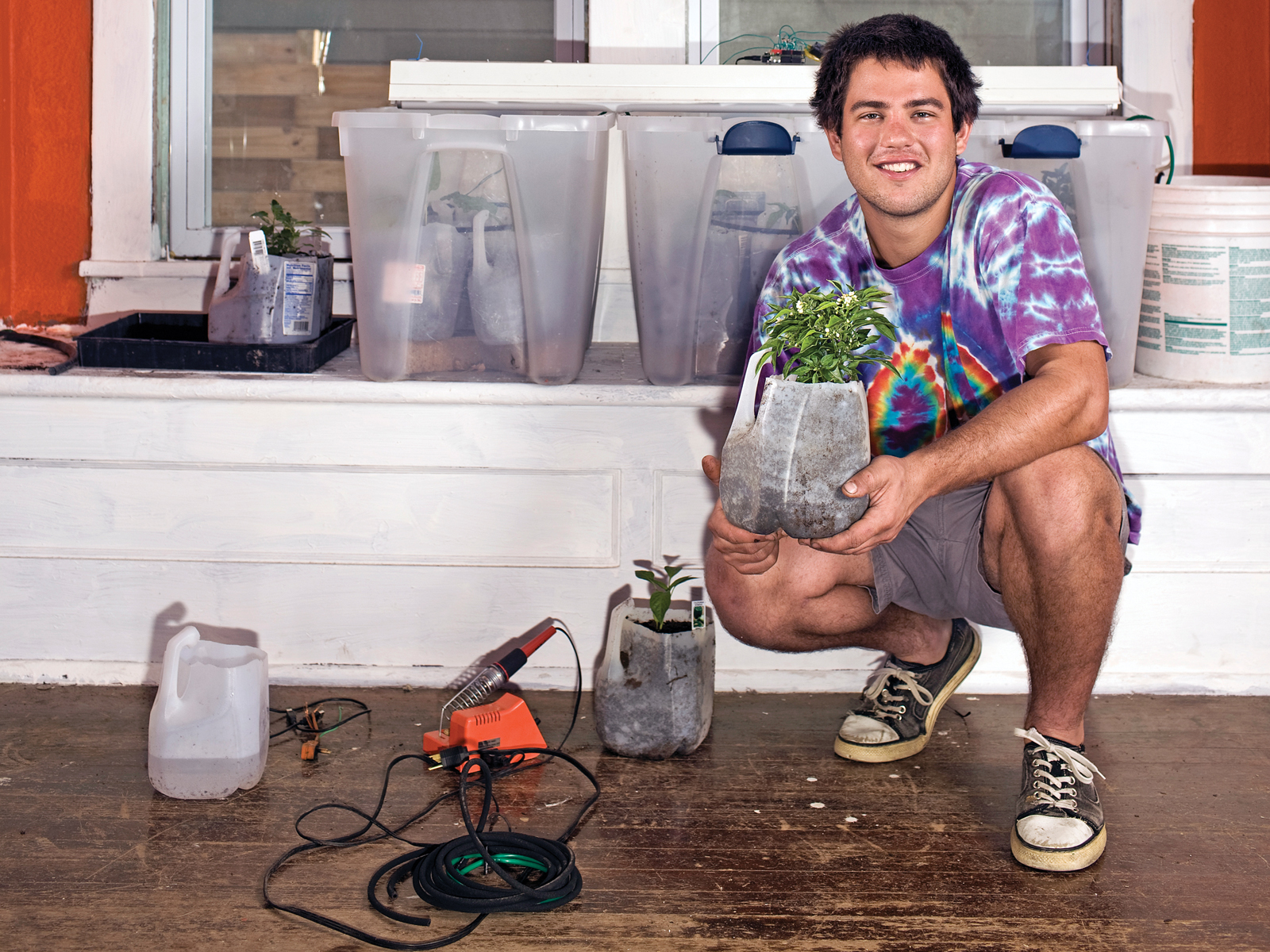Reap Your Harvest
Check your seed packets (you saved them, right?) to see how many weeks until your plants should be ready for harvest. But don’t be surprised if they’re ready sooner than that! If they seem to be growing too slowly, check your watering and lighting routines.
Evaluate Your Data
As currently implemented, Garduino needs to be hooked up to a computer that’s monitoring serial output to obtain more meaningful data to share. With additional work, it’s possible to store data on a USB drive. But for now, monitor the serial output in the Arduino environment to evaluate your Garduino’s performance.
Improve Away!
I don’t expect this beta Garduino to get everyone gardening and save the world; that’s an exercise for readers to solve with their improvements. But here are some initial ideas:
Use pulsing red and blue LEDs for an ultra-efficient lighting system (see http://screwdecaf.cx/sept.html for Mikey Sklar’s version).
Figure out what times of night your utility charges lower rates for electricity, and turn the lights on during those times only.
Build a pH probe and fine-tune your soil acidity for different plants.
Add a relay-controlled heater to keep a greenhouse version above a minimum desired temperature.
Add a battery and solar panel to take the whole system off-grid.
Use an irrigation valve instead of a pump to water your larger, outdoor garden, and add some modified solar garden lights for additional lighting.
If many people start recording the efficiency and convenience of this automated approach to gardening, then maybe we can even grow more food of better quality with less energy. Happy Garduino-ing!
You can find the complete code at http://www.makezine.com/18/garduino. I’ll add links to better versions as readers create them.


